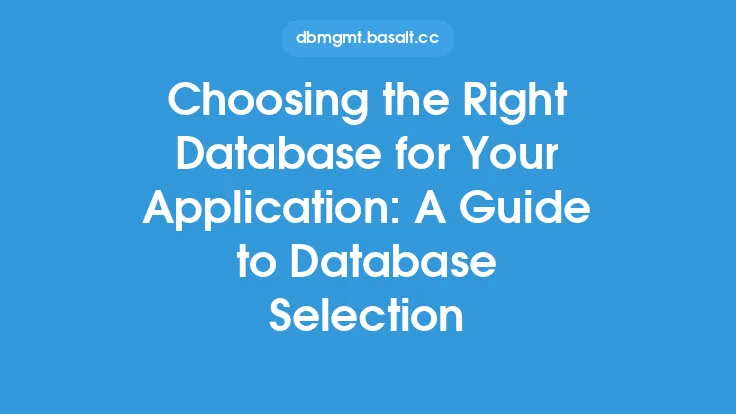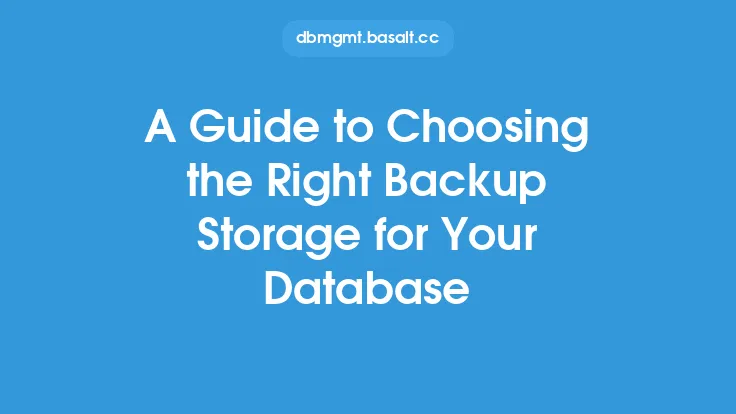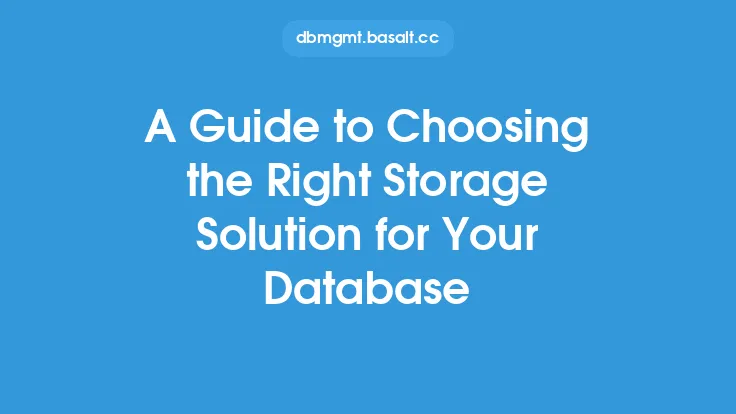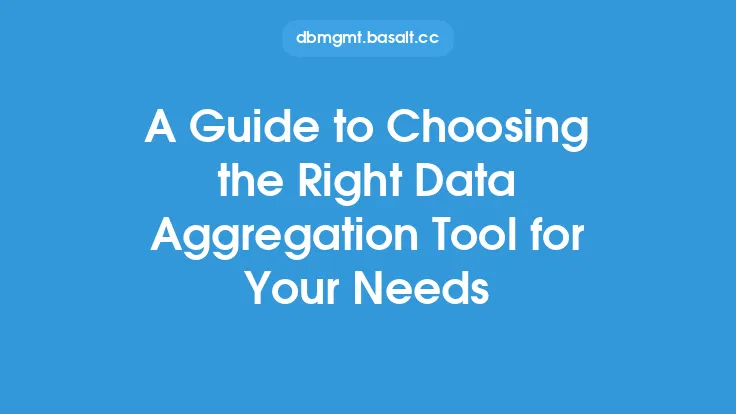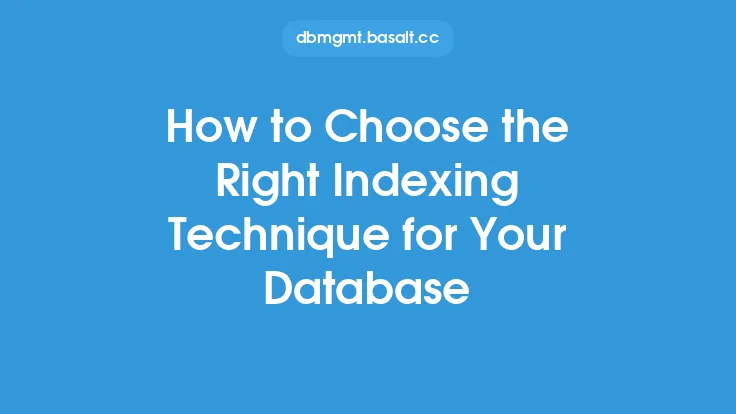When designing a database schema, one of the most critical decisions you'll make is choosing the right data types for your tables. Data types determine the type of data that can be stored in a column, and selecting the correct ones is essential for ensuring data integrity, optimizing storage, and improving query performance. In this article, we'll delve into the world of data types, exploring the different categories, their characteristics, and best practices for selecting the most suitable ones for your database schema.
Introduction to Data Types
Data types are the foundation of a database schema, and they define the type of data that can be stored in a column. There are several categories of data types, including numeric, character, date and time, binary, and spatial. Each category has its own set of data types, and understanding their differences is crucial for making informed decisions. Numeric data types, such as integers and floating-point numbers, are used to store numerical values. Character data types, like strings and text, are used to store alphanumeric data. Date and time data types, including timestamps and dates, are used to store temporal data. Binary data types, such as blobs and varbinary, are used to store binary data, like images and videos. Spatial data types, including points and polygons, are used to store geographic data.
Numeric Data Types
Numeric data types are used to store numerical values, and they're essential for storing data like prices, quantities, and measurements. There are several numeric data types, including integers, floating-point numbers, and decimals. Integers are whole numbers, either positive or negative, and they're typically used to store data like IDs, counts, and indices. Floating-point numbers, on the other hand, are used to store decimal numbers, like prices and measurements. Decimals are similar to floating-point numbers but offer more precision and are often used to store financial data. When choosing a numeric data type, consider the range of values you need to store, the precision required, and the storage space available.
Character Data Types
Character data types are used to store alphanumeric data, like strings and text. There are several character data types, including char, varchar, and text. Char is a fixed-length data type, where each value has the same length. Varchar is a variable-length data type, where each value can have a different length. Text is a data type used to store large amounts of text data, like articles and descriptions. When choosing a character data type, consider the length of the data you need to store, the storage space available, and the query patterns you expect.
Date and Time Data Types
Date and time data types are used to store temporal data, like timestamps and dates. There are several date and time data types, including date, time, timestamp, and interval. Date is a data type used to store dates, like birthdays and anniversaries. Time is a data type used to store times, like schedules and appointments. Timestamp is a data type used to store timestamps, like creation dates and update times. Interval is a data type used to store time intervals, like durations and periods. When choosing a date and time data type, consider the level of precision required, the storage space available, and the query patterns you expect.
Binary Data Types
Binary data types are used to store binary data, like images and videos. There are several binary data types, including blob and varbinary. Blob is a data type used to store large amounts of binary data, like images and videos. Varbinary is a data type used to store variable-length binary data, like thumbnails and icons. When choosing a binary data type, consider the size of the data you need to store, the storage space available, and the query patterns you expect.
Spatial Data Types
Spatial data types are used to store geographic data, like points and polygons. There are several spatial data types, including point, line, polygon, and geometry. Point is a data type used to store points, like locations and coordinates. Line is a data type used to store lines, like routes and boundaries. Polygon is a data type used to store polygons, like shapes and areas. Geometry is a data type used to store geometric data, like circles and rectangles. When choosing a spatial data type, consider the level of precision required, the storage space available, and the query patterns you expect.
Best Practices for Choosing Data Types
Choosing the right data types for your database schema requires careful consideration of several factors, including data integrity, storage space, and query performance. Here are some best practices to keep in mind:
- Choose data types that match the data you need to store. For example, use integers to store whole numbers and floating-point numbers to store decimal numbers.
- Consider the range of values you need to store. For example, use a small integer to store a small range of values and a large integer to store a large range of values.
- Consider the precision required. For example, use a decimal to store financial data and a floating-point number to store scientific data.
- Consider the storage space available. For example, use a compact data type like integer to store small values and a larger data type like blob to store large values.
- Consider the query patterns you expect. For example, use an indexable data type like integer to store data that will be frequently queried.
Conclusion
Choosing the right data types for your database schema is a critical decision that can affect data integrity, storage space, and query performance. By understanding the different categories of data types, their characteristics, and best practices for selecting the most suitable ones, you can design a robust and efficient database schema that meets your needs. Remember to consider factors like data integrity, storage space, and query performance when choosing data types, and don't be afraid to get technical and explore the nuances of each data type. With careful planning and attention to detail, you can create a database schema that will serve your needs for years to come.
